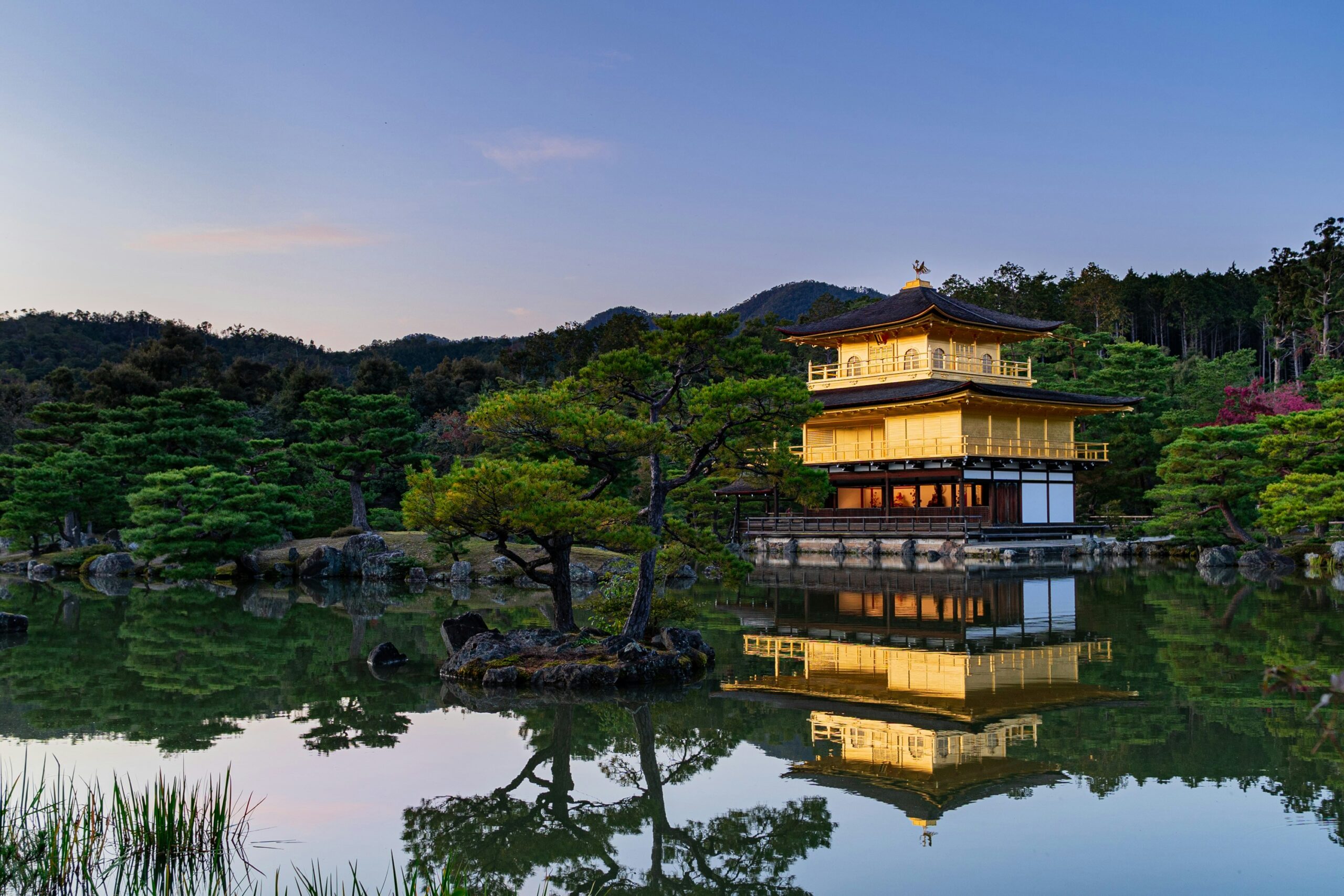Born and raised in Seville, Spain, I now spend my days in London as a business professional constantly on the move—meetings, proposals, flights, and then another city. In the midst of this relentless cycle, a quiet thought crept in: I want to take a journey where I can listen to silence and see myself more clearly.
The spark came from a photo sent by a business partner. A golden building, perfectly mirrored in a still lake, surrounded by soft green trees that seemed to glow. There was something otherworldly about it—yet grounded in a warmth that felt real. “This is Kinkaku-ji,” my partner said. “A temple in Kyoto, Japan.” In that moment, I realized—half my heart was already there.
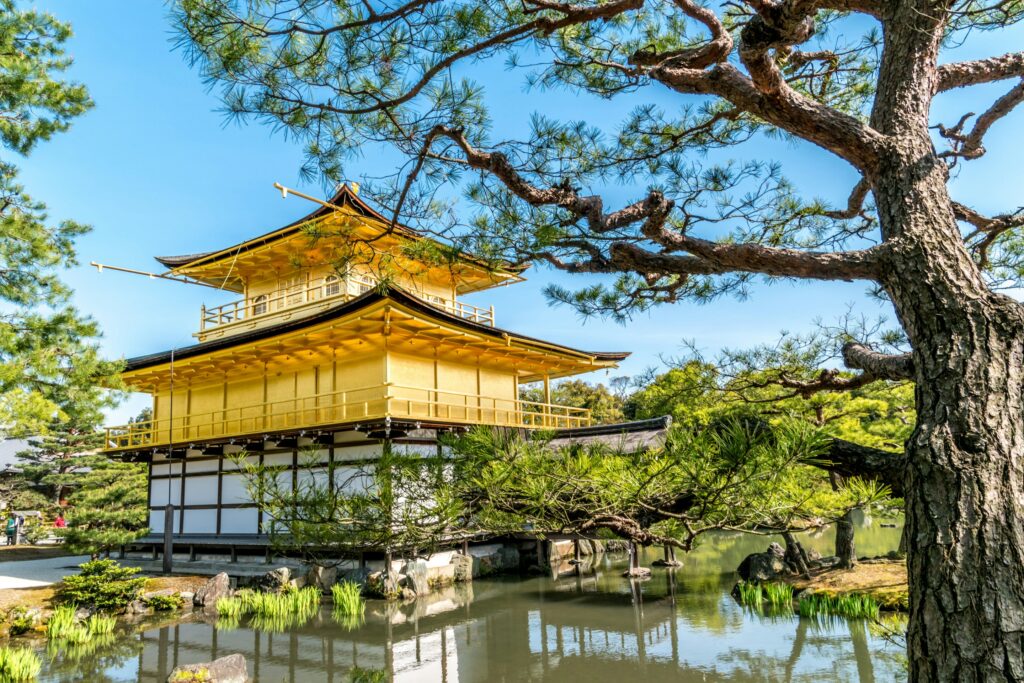
I arrived in Kyoto at the turn of spring into summer, when the greenery is lush but gentle, powerful yet calm. After a 30-minute ride from Kyoto Station, the bus dropped me off in the Kitayama area where Kinkaku-ji stands. The air changed instantly—cooler, slower, more deliberate. Though tourists wandered the streets, I noticed locals passing by on bicycles, the mundane and the extraordinary coexisting in quiet harmony.
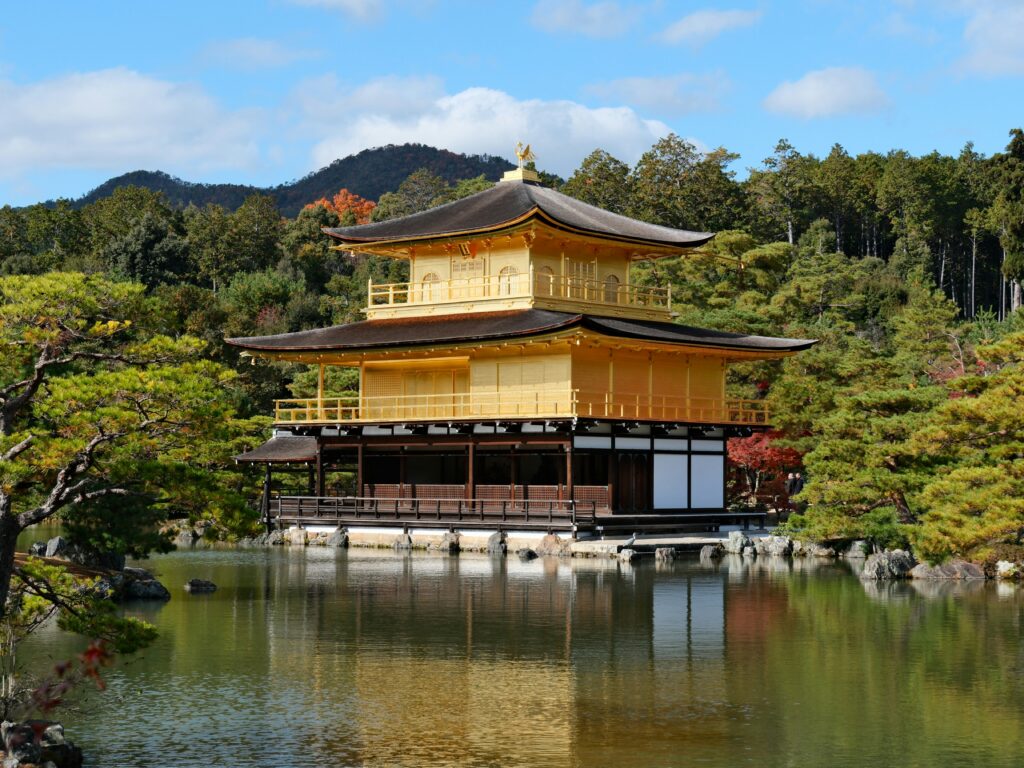
Kinkaku-ji was smaller than I expected, but its presence was overwhelming. The three-tiered golden structure shimmered above a perfectly still pond, known as Kyōko-chi, the Mirror Pond. Its reflection was so symmetrical it felt almost unreal—like nature and human hands had conspired to create a moment of impossible beauty. When the wind stirred, the trees rustled, the water rippled, and the golden image quivered. In that imperfection, I found something deeply comforting—what appears perfect is always in motion, always becoming.
Around the temple, moss-covered gardens and tea-house-like buildings dotted the grounds. I sat on a quiet bench away from the crowds, and a young man beside me struck up a conversation. He wore a blue polo shirt and jeans, a camera hanging from his shoulder. His name was Haruki, 28 years old—a photographer.
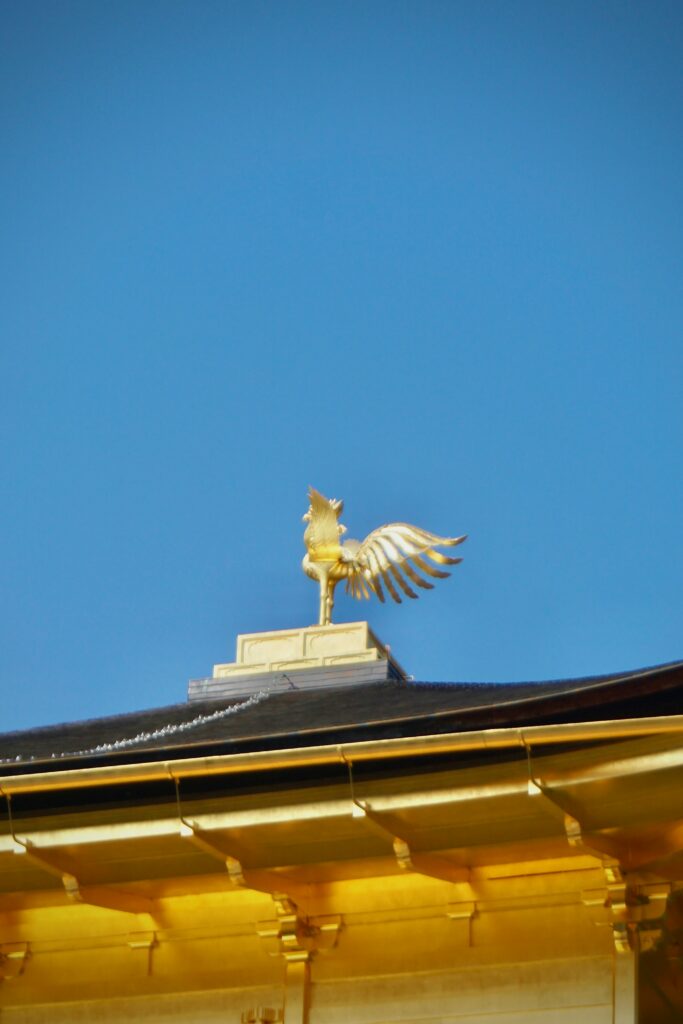
“Do you like Kinkaku-ji?” he asked.
“Very much. The silence here feels like a kind of sound,” I replied.
He smiled, a little surprised. “That’s a very Japanese way of feeling.”
Haruki told me he had grown up in a mountain village and came to Kyoto to study photography. His work focuses on capturing both light and shadow with care. “Just light alone is boring,” he said. “It’s the shadows that give things a story.” I thought of Kinkaku-ji again—how its golden glow was only made more powerful by the shade of the trees and the shifting water. Beauty, I realized, lives in that tension between radiance and quiet.
For lunch, we stepped into a nearby machiya-style restaurant—a traditional Kyoto townhouse. The exterior was wooden, with a noren curtain swaying gently at the entrance. Inside, tatami mats and small wooden tables created a space that felt timeless. I ordered a set meal with saba-zushi and simmered yuba. The saba-zushi, pressed vinegared mackerel on rice, offered a soft texture and a perfect harmony of tang and umami. The yuba—made from the delicate film of soy milk—carried a subtle sweetness, enhanced by a fragrant broth that lingered on the palate.
“Japanese food doesn’t shout,” I said. “But it speaks deeply.”
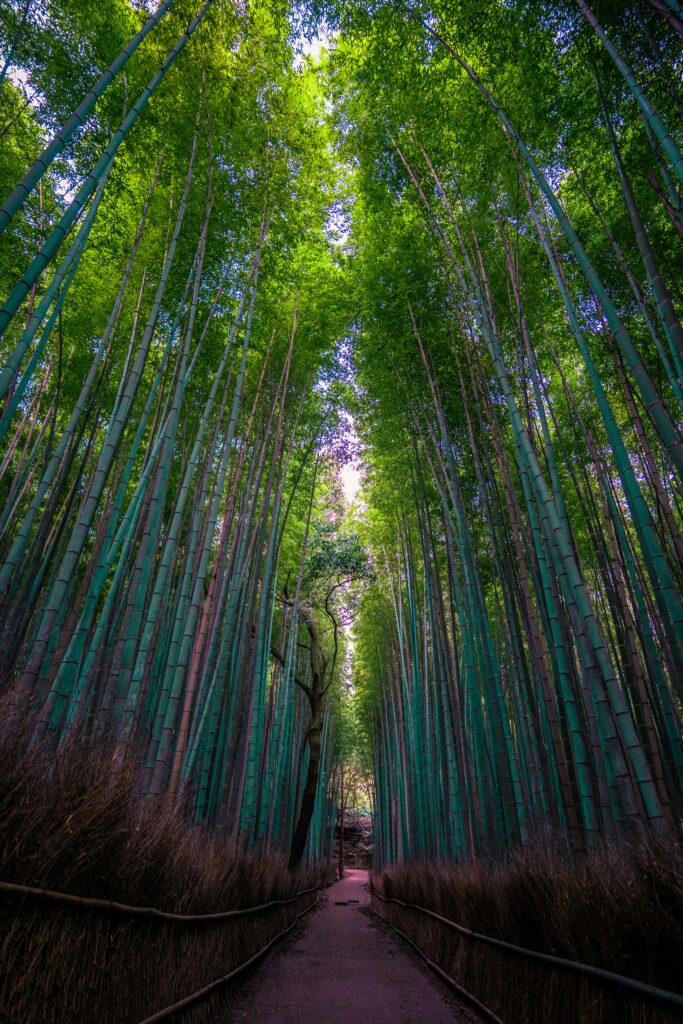
After lunch, I followed Haruki’s suggestions and visited several places that revealed even more layers of Kyoto. One was Arashiyama, a scenic area embraced by mountains and river, famous for its bamboo groves. The wind rustling through the tall bamboo stalks created a melody that felt ancient and alive. Next was the Philosopher’s Path, a quiet walkway along a canal where even the footfalls of others seemed contemplative.
Haruki nodded. “Maybe because it listens to the ingredients.”

Finally, the aqueduct at Nanzen-ji Temple, a series of red brick arches that looked as though Europe had quietly left a whisper of its past here in Japan. Nearby, the Tenju-an subtemple caught my eye with its elegant wooden gate and serene, understated architecture—nestled harmoniously into the garden, as if part of the landscape itself.

In the afternoon, I paused at a sweet shop tucked inside another machiya. Sliding open the wooden door, I entered a space lit by soft washi-paper lanterns, with ambient music gently filling the room. I ordered a matcha parfait—a beautiful tower of green tea ice cream, sweet red bean paste, mochi, chestnuts, and clear cubes of agar. The bitterness of the matcha danced with the sweetness of the other elements, unravelling a deep calm inside me with every spoonful.
At the end of the trip, I returned to Kinkaku-ji once more. The sun was beginning to set, casting a warmer, softer glow over the golden pavilion. And in that light, I began to understand what I had truly come seeking—and what I had found.
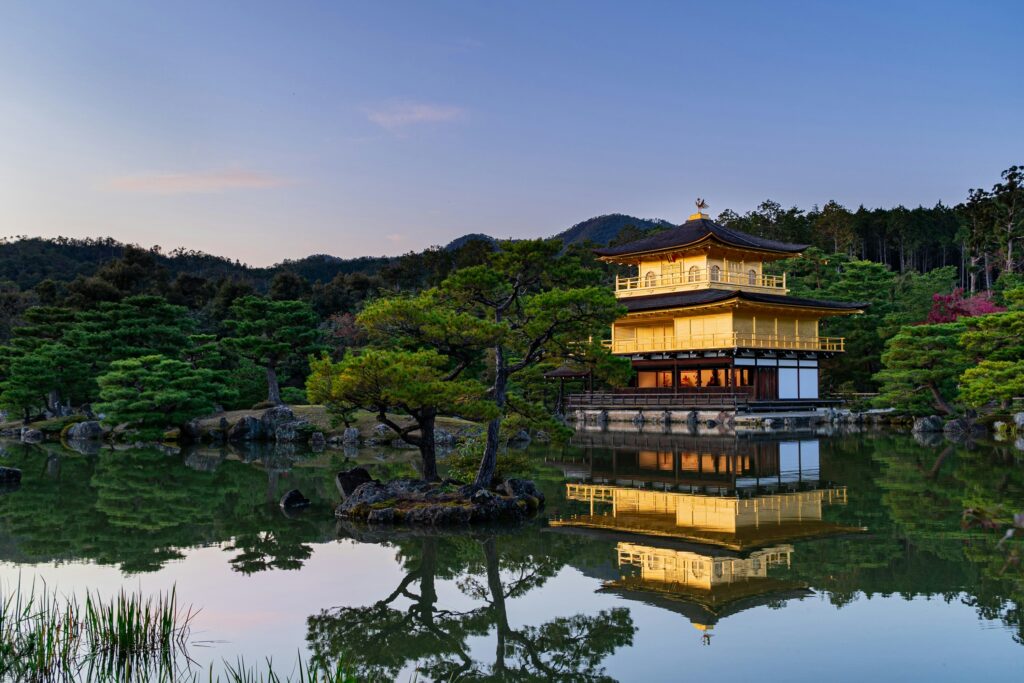
I had been chasing perfection. Efficiency. Results. Success. These were the foundations of my professional life. But here, in the reflection of gold and water, I saw something else: Balance. Between light and shadow. Between silence and movement. Between human effort and nature’s flow. Haruki’s words echoed in my mind: “It’s the shadows that give things a story.”
Through this journey, I learned to listen to quiet. I came to value the imperfect—not as a flaw, but as the very space where beauty begins. Wherever I go next, I know I will walk more slowly, and speak more softly with the world. Just like the surface of Kinkaku’s pond—reflecting not only what’s above, but what lies within.
Something New Travel

